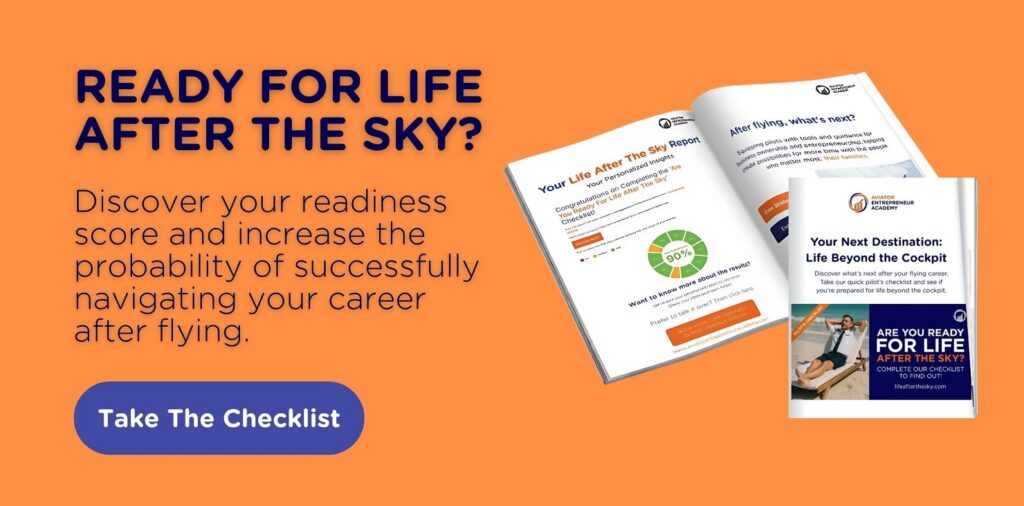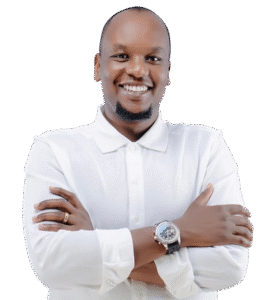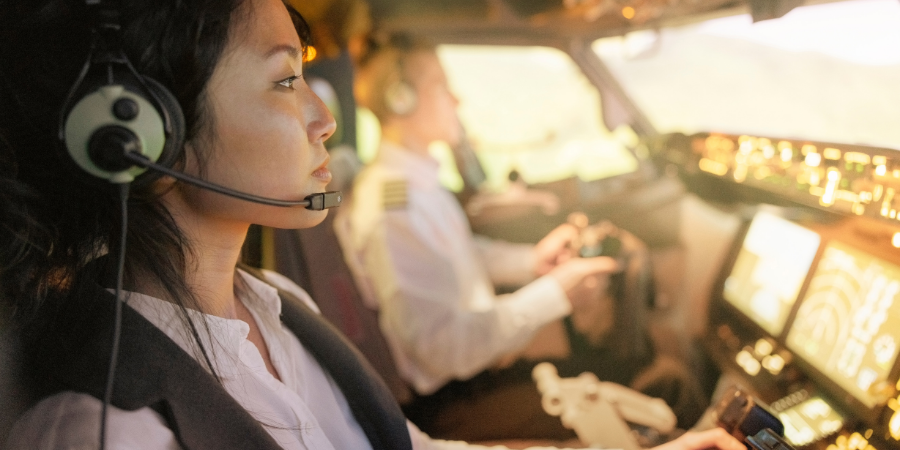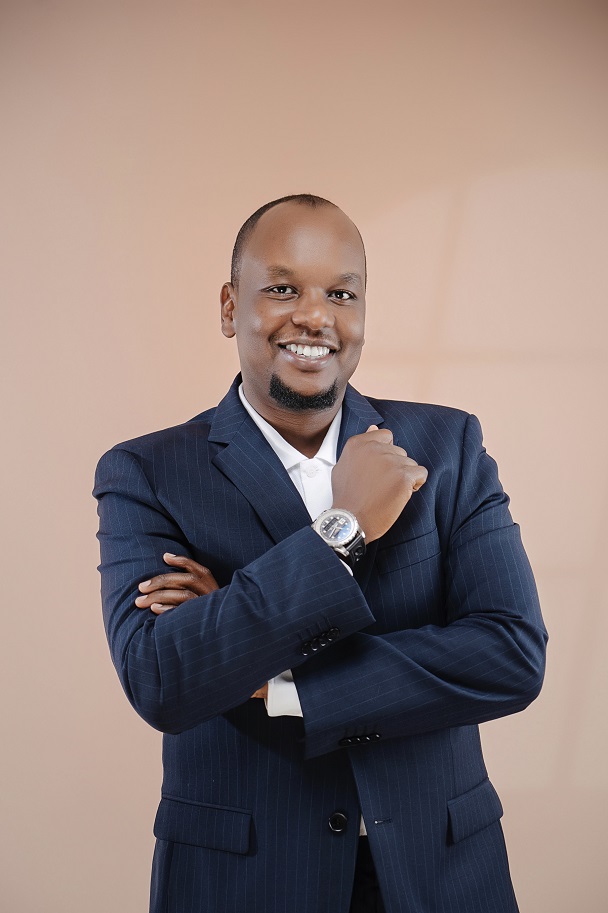If you weren’t already a pilot, would you choose to become one today?
It’s a confronting question, but also a necessary one. Not because there’s something wrong with flying or your career is broken.
Because comfort can quietly drift into autopilot, and most people don’t realize it until they’re 38,000 feet in the wrong direction.
We rationalize, “This is who I am.”
But what if that inner resistance… isn’t clarity at all?
Let’s explore it in detail.
Key Takeaways
- The endowment effect is real: Once we own something, we assign it more value than it may truly hold. This psychological bias often stops pilots from questioning if their current life still serves them.
- Behavioral biases keep you grounded: Psychological effects like Loss Aversion, the Sunk Cost Fallacy, and the Endowment Effect cause pilots to cling to what no longer matters, even when they know it deep down.
- Mug experiment mirrors your mindset: The experiment showed that people overvalue a $3 mug just because they own it. That’s exactly how we overvalue careers, roles, or lives.
- Here’s your reality check: If you’re unsure where to begin or what your life could look like, the AEA Scorecard gives you instant clarity in only 3 minutes.
| What is the Endowment Effect? The Endowment Effect is a psychological bias where we irrationally overvalue something simply because we already possess it. |

The Mug That Nobody Wanted to Sell (But Everyone Overpriced)
In 1990, Kahneman, Knetsch, and Thaler conducted an experiment in a classroom. Half the class was handed a simple ceramic coffee mug, and the other half got nothing.
Then they were told to trade it.
Those with mugs were asked how much they’d accept to part with theirs. Those without mugs were asked how much they would be willing to pay to obtain one.
Following that, things got weird.
The sellers wanted twice as much as the buyers were willing to pay.
Not because the mug was special. Simply because they owned it.
This is the Endowment Effect in action. The moment we possess something, we assign it more value. Not based on usefulness. Just based on ownership.
In fact, the Harvard Business Review also conducted research that explains why we cling to things that no longer serve us.
Let’s zoom out a little:
If we do this with mugs… what about jobs?
What about identities?
How This Bias Hides in Pilot Culture
Ask your fellow pilot why they’re still flying the same routes, at the same time, in the same role after 15 years, and they’ll often say something like:
“I’ve come this far already.”
Or
“What else would I even do?”
These aren’t excuses. They’re stories, and stories have power.
In aviation, there’s an unspoken reverence for consistency, and in many ways, that makes sense. Flying demands discipline, predictability, and procedural thinking.
However, when that mindset bleeds into our life decisions, it becomes something else. Stability that begins to resemble entrapment.
So, let’s pause and ask ourselves:
“If I met this life again, same hours, same routes, same identity, without already owning it, would I say yes again?”
The Hidden Cost of Clinging
We rarely ask what staying is costing us.
Not in dollars. In energy, presence, and possibility.
We might be flying 90 hours a month. Hitting targets. But what’s being quietly lost in the margins?
- The project we always meant to start?
- That version of us that feels more alive outside the uniform?
Here’s the hard truth:
Staying out of habit doesn’t just slow us down. It erodes our clarity and numbs our intuition. And it makes “professionalism” look suspiciously like an emotional shutdown.
On paper, everything looks fine, but inside, we’re clinging to things like outdated charts and trying to fly towards a future with instruments that only made sense a decade ago.
“Flying with old data is dangerous in the cockpit. Why tolerate it in our life?”
Even Our Body Renews, But Our Flight Plan Hasn’t Changed in Years
Our body replaces itself every 7 to 10 years.
Skin cells? Every 2 to 3 weeks.
Liver? Every 300–500 days.
Even our bones rebuild, fully, within a decade.
This matters more in aviation than almost any other field. Why? Because pilot life is built around structure. Bids, contracts, flight plans, seniority systems, they’re designed for stability.
Aviation, itself, is all about recalculating, updated charts, and revised procedures.
We wouldn’t dream of flying with last year’s data.
But the irony here is most pilots are still stuck to life routes that haven’t been updated in over a decade.
It’s because the aviation world trains us to value consistency.
“In aviation, flying with outdated charts is dangerous. But so is living with an outdated identity.”
A Quiet Question That Can Shift Everything
Before every flight, we run a checklist.
We confirm the engine status, the fuel, alternates, comms and more.
But, when’s the last time we ran a checklist on our career?
Here’s a question for us to ask ourselves:
“If I didn’t already have this flying life—same hours, same routes, same identity—would I choose it today?”
Don’t answer right away. Let it float with you at FL370.
Think about it during a deadhead.
Ask it on that hotel bed, 2,000 miles from home.
Because if the answer is “Yes”? Great. You’ve consciously re-chosen it. That’s power.
But if the answer is “No”? That’s not a failure, that’s flight data. It’s situational awareness for our soul.
And like every good pilot, awareness precedes action.
Why Pilots Stay Even When They’re Ready to Move On
A lot of pilots know deep down that they’re not happy.
Not fulfilled or not challenged enough.
But they still stay there. Why?
The answer lies in behavioral sciences:
- The Endowment Effect: You already know this one: we value what we own, even when it’s outdated.
- Loss Aversion: We fear losing more than we hope to gain. That upgrade you’ve waited 10 years for? You’re scared to walk away, even if it means a better fit elsewhere.
- The Sunk Cost Fallacy: You’ve already put in 12 years. Maybe 18. So, we tell ourselves: “Might as well ride it out now.”
The truth is pilots aren’t stuck because they’re capable of change. We’re stuck because we’re taught to complete missions, not question them.
But in this case, our life is the mission.
Still Not Sure What to Let Go Of? Start Small
If this article stirred something, maybe a flicker of discomfort, a memory, or even a quiet sense of relief, you’re not alone.
Most pilots don’t wrestle with change because they’re unsure of what they want. They do it because they’ve been trained to stay steady, not stop and assess.
In the end, if you’ve got just 3 minutes, we’ve built something that can help. Just a simple tool designed to give you a clear signal beneath the noise.
Invitation to join our FREE Strategy Session
Most pilots are one honest conversation away from clarity. This is that conversation.
Complete our “Life After the Sky” checklist, then join me for a FREE 15-minute “Strategy Session” via Zoom.
This session has been created for pilots who want to take ownership of what comes next.
Those who want action, not just to talk about it.
In just 15 minutes, we’ll:
- Review your checklist results
- Identify the one obstacle holding back your reinvention
Translate your checklist results into a clear starting point
Start your pre-flight assessment for the next chapter of your journey by Booking your free strategy session here!



